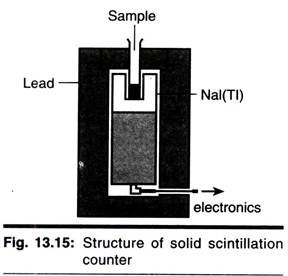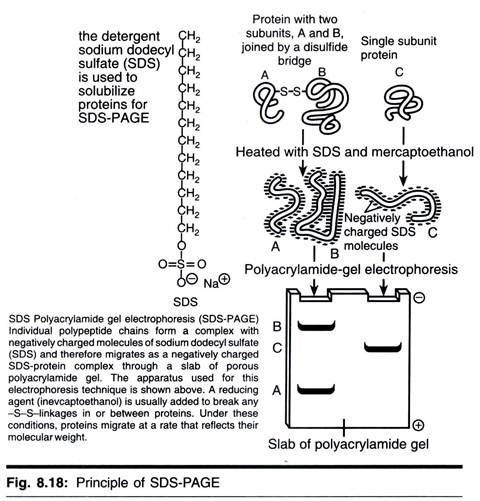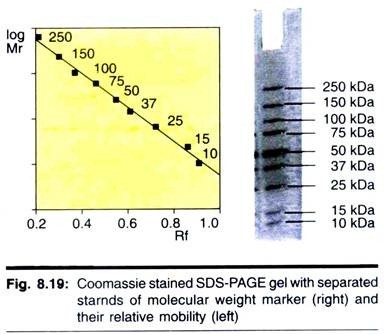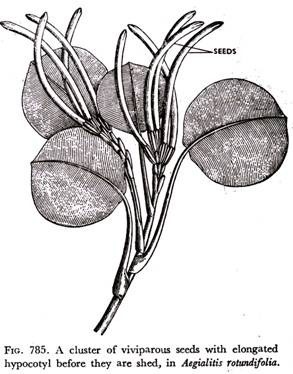Development of bone begins from mesoderm in the embryonic life (from sixth week) and a good number of bones of the human body continue to grow until a person reaches about twenty-fifth years. There are two processes of ossification-intramembranous and intracartilaginous (endochondral). The bones of the cranial vault and the mandible are membranous in origin. The bones of the limbs, trunk and base of the skull are both cartilaginous and membranous in development.
1. Intramembranous Ossification:
It is the simpler form of ossification and most bones of the face, cranial vault and clavicles are formed in membrane. In this process of ossification the embryonic mesenchymes consisting of the primitive connective tissue become congregated or connected by their processes without having cytoplasm continuity. This area becomes richly vascularised. (Fig. 1.52)
The mesenchymal cells (preosteoblasts) increase in size and are clustered together to form long strands of cells radiating in all directions and secrete collagenous fibrils. The cytoplasms of the mesenchymal cells become basophilic and ultimately differentiated into osteoblasts. Between osteoblasts, their bars (trabeculae) of dense intercellular substance appear and mark the connective tissue fibres (osteogen fibres) already presents within the matrix.
The cells ultimately become embedded by the bars of dense matrix that increase in size. The matrix at this stage is not calcified and the tissue thus formed is loose. Between cells and collagenous fibrils, a semisolid fluid, osseomucoid is present. The organic non-calcified component is known as osteoid.
Later on calcium salts are deposited presumably by the activity of osteoblasts. As the osteoblasts deposit successive layers of calcium salts in the matrix, certain osteoblasts are also entrapped within minute spaces— lacunae. These entrapped osteoblasts are osteocytes. Lacunae and canaliculi are successively formed; and canaliculi of adjoining lacunae thus connect with each other.
Spicules (bars) of bone, containing osteocytes and surrounded by actively secreting osteoblasts, can now be recognised. As the bony spicules increase in size and complexity, so the osteoblasts proliferate to keep pace with the requirement for more bone-forming cells. In this process, cancellous bone forms. All newly formed bones are cancellous (Fig. 1.53) whether produced intramembranously or by intracartilagi- nous ossification.
After this initial stage of bone formation the osteoblast appears on the surface of the newly formed bone and through the activity of the osteoblast the thickness of bone is increased. The source of osteoblast in the surface is maintained through the mitosis and also from the undifferentiated cells in the surrounding connective tissue. At the periphery of the ossification centre, the mesenchyme condenses to form the periosteum.
2. Intracartilaginous (Endochondral) Development of Bone:
Through this process most of the skeletal bones are formed. In the embryo, where the bone formation is required, mesenchymal cells become developed into a cartilaginous model. Ultimately, the cartilage cells completely disappear and it is transformed into bone. (Fig. 1.54)
The importance of this provisional cartilaginous foundation lies in three facts:
i. It provides a suitable medium for the deposition of calcium salts.
ii. It serves to determine roughly what shape the finished bone will take in future.
iii. It is by the growth of this cartilage (then known as epiphyseal cartilage) that the bone grows in length.
Process of Intracartilaginous Bone Formation:
In a long bone of a limb the ossification initially starts with the appearance of a fibrous membrane around the centre of cartilage model. This fibrous membrane, perichondrium, has got osteogenic function and cells of the perichondrium adjoining the cartilage become hypertrophied and give off long processes to form a meshwork of interlacing fibres.
These cells are osteoblasts and fibrous network is then impregnated with calcium salt and forms a true bone beneath the perichondrium. This bone provides a rigid mass and surrounds the cartilage as collar or ring which is known as periosteal bone collar or ring or subperiosteal bone. The perichondrium thus afterwards becomes periosteum.
Simultaneously with the formation of collar, certain changes in the centre of shaft (diaphysis) of the cartilaginous model are observed. This centre is known as primary ossification centre. The cartilage cells become hypertrophied accumulating glycogen and appropriate glycolytic enzyme and phosphatase and throw out longitudinal row of cartilage cells on both sides.
As the cartilage cells are hypertrophied, the intercellular substance is also sufficiently hypertrophied and secretes phosphate. If calcium and phosphates are available around the cartilage spicules (spiky remnants of the cartilage model) in a certain proportion relative to each other (this proportion being controlled to some extent by the activity of ductless glands), then the intercellular substance is calcified. With the calcification, the cartilage cells become cut off from nutrition and cells die.
With the disintegration of the calcified cartilage at the centre of the cartilaginous model (primary ossification centre), irregular cavities are formed in the cartilage matrix. Periosteal bud consisting of the osteogenic cells (undifferentiated mesenchymal cells of perichondrium), osteoblast and capillaries of the inner layer of periosteum, invades these cavities.
The osteoblasts that are initially advanced into the interior of blood vessels thus lay down bone on the remnants of the cartilage intercellular substance. These spaces of the shaft are joined up to form the Haversian canals which help as conduits for running of blood vessels.
The process of ossification proceeds and extends from the centre of the shaft towards the ends of the cartilage. The periosteal bone collar also becomes thicker and extends towards the epiphyses. This bone collar gives a support in maintaining the strength of the shaft. Besides this the thickness of the bone depends upon the activity of the deeper layer of the periosteum of the shaft.
At somewhat later date, and possibly at the time of birth secondary ossification centres appear in each epiphysis of the long bones. The segmental changes for calcification and subsequent ossification are the same as described for the diaphysis. Cartilage cells are hypertrophied and after-wards calcified. The calcified cartilage is resorbed as usual.
Ossification afterwards is started by the osteoblast on the wall of spaces created due to calcification. Bone deposition is exempted on two regions—particular region and epiphyseal plate. Cartilage cells remain over these areas. The epiphyseal plate or cartilage keeps the diaphysis and epiphysis separated from each other up to certain years of age (app. 25 years) after which the same becomes fused with each other. The growth of the long bone in length depends upon the growth of the epiphyseal plate.
The epiphyseal plate goes on multiplying continuously and throws out longitudinal rows of cartilage cells on both sides. This newly formed cartilage becomes ossified and in this way the bone grows in length. In younger life the rate of multiplication of the epiphyseal cartilage is proportionately more than the rate of calcification. Consequently, long bone increases in length.
Growth apparatus is formed by epiphyseal cartilage with metaphysis and is the route of growth in length of long bones. Metaphysis is the column of spongy bones and units of the epiphyseal cartilage to the shaft (diaphysis). But, as age advances the rate of multiplication of cartilage cells slows down, so that the process of calcification becomes relatively more rapid and overtakes the whole strip of the multiplying cartilage. Thus the epiphyseal cartilage becomes ossified and growth in length ceases. Near about the twenty-fifth year of life all the epiphyseal cartilages are ossified and replaced by a spongy bone and marrow.
After fusion of the epiphyseal bone with the diaphysis, the growth in length of the bone becomes quite impossible and growth is stimulated afterwards by over activity of the growth hormones or somatotrophs hormone (STH) then abnormal growth occurs. This overgrowth of bone is mostly confined to the bones of the face, hands and legs. This condition is known as acromegaly. On the other hand, if this STH is secreted before the fusion of the epiphyseal bone with diaphysis then excess growth of the immature long bone occurs causing gigantism.
Histological changes evolved in endochondral ossification: These changes can be seen in longitudinal section of a developing long bone of a limb. Three stages are seen during cartilaginous ossification.
They are as follows:
1. The stage of hypertrophy (Fig. 1.55).
This is seen in the Primary ossification centre and presents the following features:
i. The first indication of bone formation is at the perichondrium around the centre of diaphysis. The cells here hypertrophy and become osteoblasts. The osteogenic activity of osteoblasts changes the perichondrium into a periosteum.
ii. The cartilage cells enlarge and become arranged in linear rows, radiating from the centre.
iii. Irregular deposition of calcium salts takes place between the cells. This part of ossification is of membranous development.
2. The stage of irruption (Fig. 1.56). This stage comes a little later than the first stage. The sub-periosteal cells become hyperactive and eat away a portion of the newly formed subperiosteal membrane bone.
Through this eroded spot the periosteal bud containing osteoblasts, osteoclasts, connective tissue and blood vessels stream down into the depth of the bone and invade the calcified mass in the primary ossification centre. The hollow spaces opened up in the process are the primitive marrow spaces and their contents are the primitive bone marrow. Even during this early stage red and white blood cells can be seen in various stages of development.
3. The stage of ossification or the stage of true bone formation (Fig. 1.57). This process is similar to intramembra- nous bone formation. Gradually, the marrow spaces in the centre coalesce and from medullary canal. Similarly, Haversian systems are developed.
The bone increases in diameter by two opposite processes going on simultaneously. On the external surface the sub-periosteal osteoblasts deposit layers of membrane bone, while, in the interior, cells of the endosteum absorb layers of bone from walls of the medullary canal. In this way bone increases in breadth and the medullary canal widens.
It should be noted that the healthy adult bone is not a fixed static material. It is constantly being broken down, reabsorbed and repaired by the co-ordinated activities of osteoclasts and osteoblasts. Osteoblasts elaborate alkaline phosphatase and help in laying down collagen fibrils in the ground substance.
Over these collagen fibrils calcium and phosphates are deposited. The alkaline phosphatase which is present in osteoblasts, breaks down organic phosphate esters to increase the calcium; the phosphate level to a critical value. The precipitation occurring as a result of this changes to hydroxyapatite (Ca10 (PO4)6 (OH)2) and then gradually to dense bone.




